Expand into High-Growth Markets with Strategic Competitive Data

Il tuo browser non è aggiornato. Il sito potrebbe non essere visualizzato correttamente. Ti invitiamo ad aggiornare il tuo browser.

When you expand into a new geographic market, you’re literally stepping into new territory.
So, if you want to expand strategically, you need data to understand and target the most promising regions for growth.
With good data, you can capitalize on high-potential audiences, tailor your strategies to local dynamics, and effectively position your brand for success.
Ready to expand your market reach with insightful data?
Follow this step-by-step guide utilizing Market Explorer, Traffic Analytics, EyeOn, and One2Target to navigate new regions, analyze geo-specific market trends, optimize your entry strategy, and engage with the right audiences for sustained growth.
Market Explorer is your first stop to uncover locations with great potential for your business.
First, examine the Market Summary section. Here you can gather key data about your market, including:
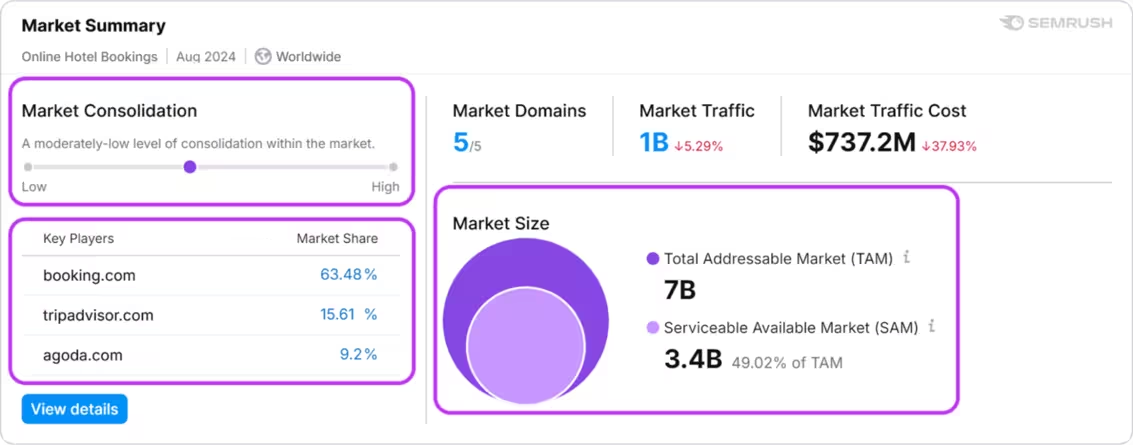
Next, filter by region or country to see which countries show the most potential. Look to the Market Consolidation and Market Size to understand the potential.
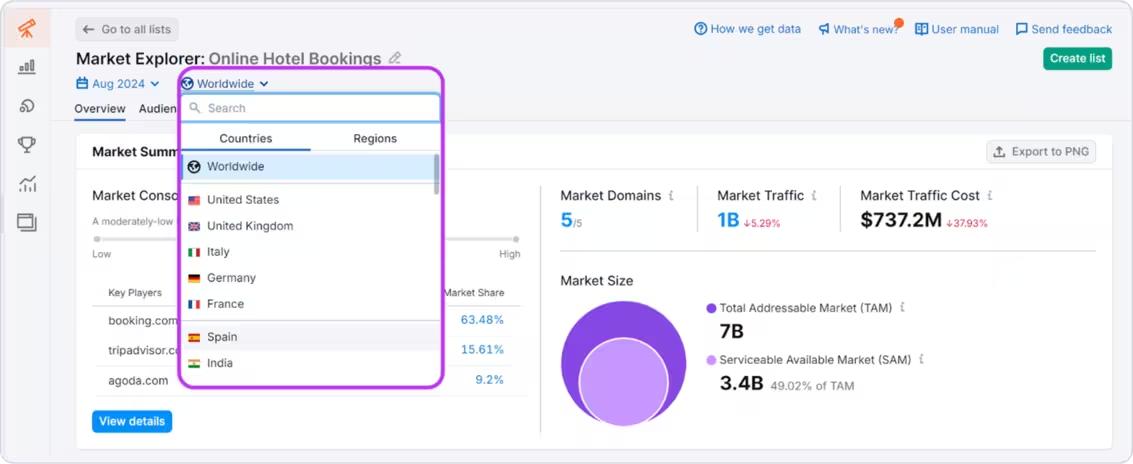
For each new geographic region, review the key players in this location. Note whether they’re the usual suspects or new ones you’ll need to learn more about.
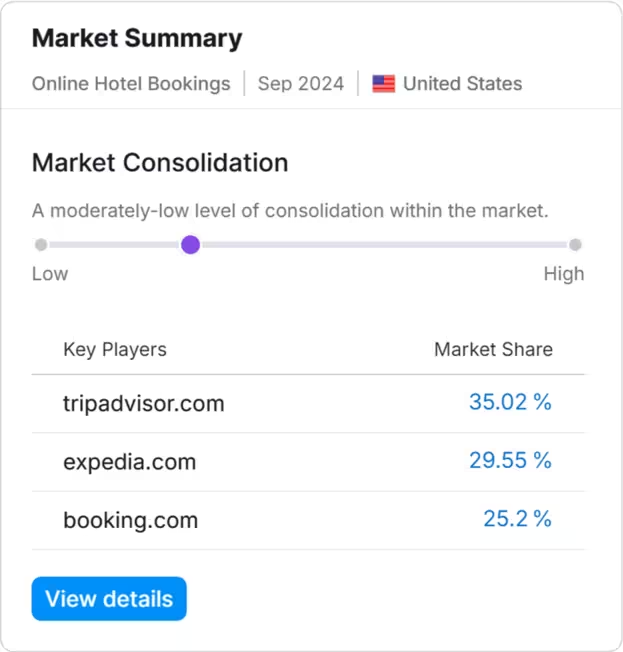
Often the leaders in one geographic region differ from those in another region. Knowing your competition and their market share is key information moving forward.
Scroll down to see the Market Geo Distribution. Select the Top Changes tab. Here, you’ll find data on emerging markets that might not otherwise be on your radar.
Hover over each country on the map to get details on recent traffic growth, global market share, and traffic.

Once you identify high-growth markets, you can return to step one to conduct additional market research for each one.
Once you have a shortlist of new locations to enter, learn how competitors have done in those markets and what strategies they use to succeed in the selected markets.
First, use the Growth Quadrant to determine whether these top players have gained or lost traction in a particular market.
If most of the competitors are seeing growth in the region, that’s another sign that this market is worth considering. If the results are mixed, look to the competitors who have seen growth. You’ll want to follow them to see what they’re doing well to keep traffic growing.
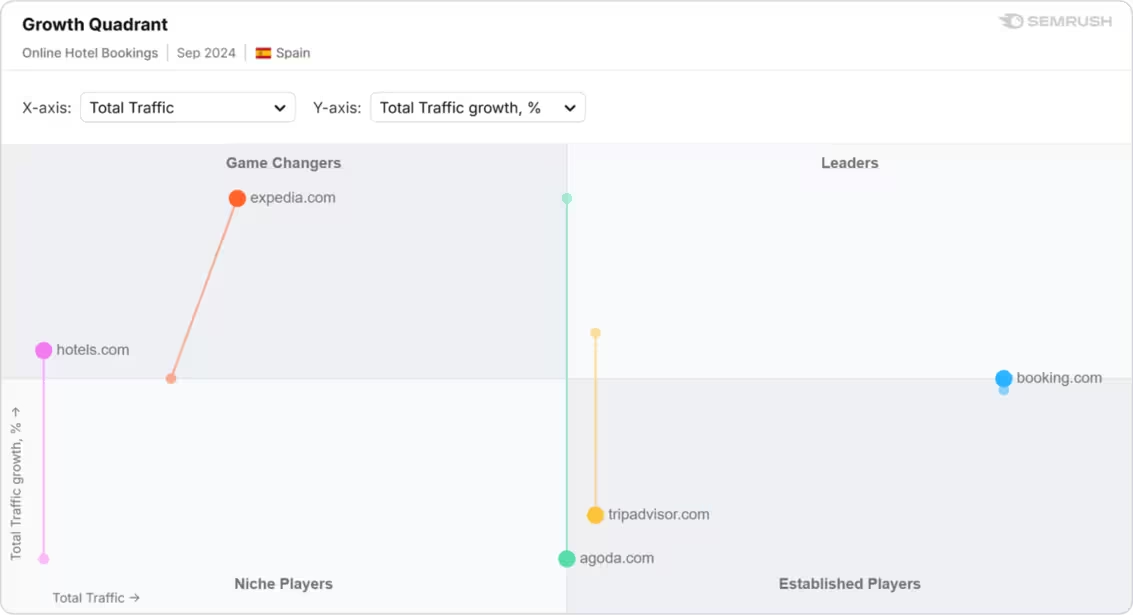
The Domain vs. Market Dynamics section examines your top target companies and compares them to the market at large.
Examine the market and competitor's trend lines. Are both lines trending upward? Downward? Flatlining? These trends will indicate the traffic potential of this new market.
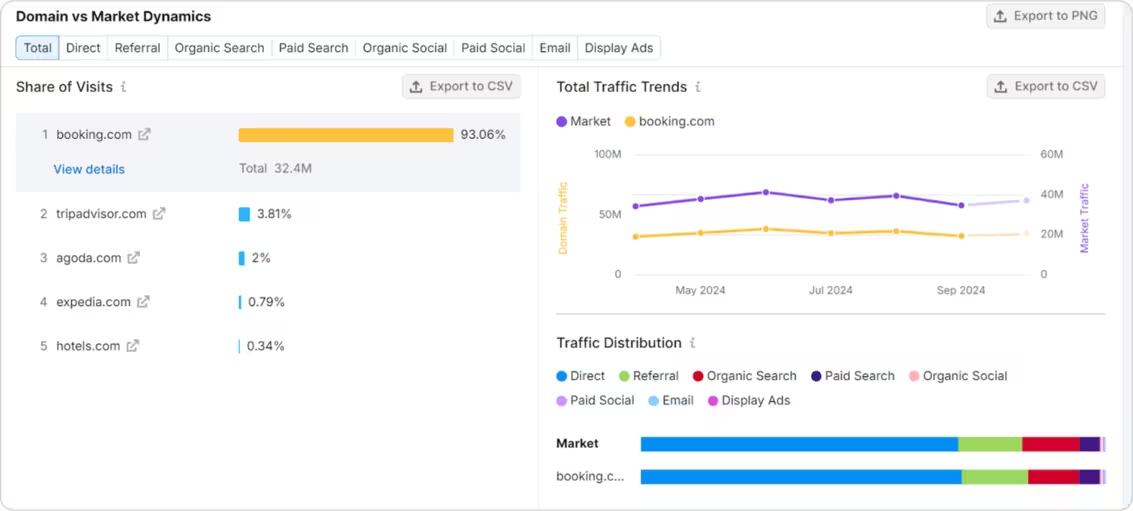
Then, click a tab to explore the traffic potential of a particular marketing channel. Let’s choose organic social.
Look at the “Organic Social Traffic Trends” chart. Here, we see the trend moved upward through the summer but dropped significantly in August. This could be a seasonal trend you’ll want to consider, though if organic social traffic continues downward, it may be a declining channel overall.
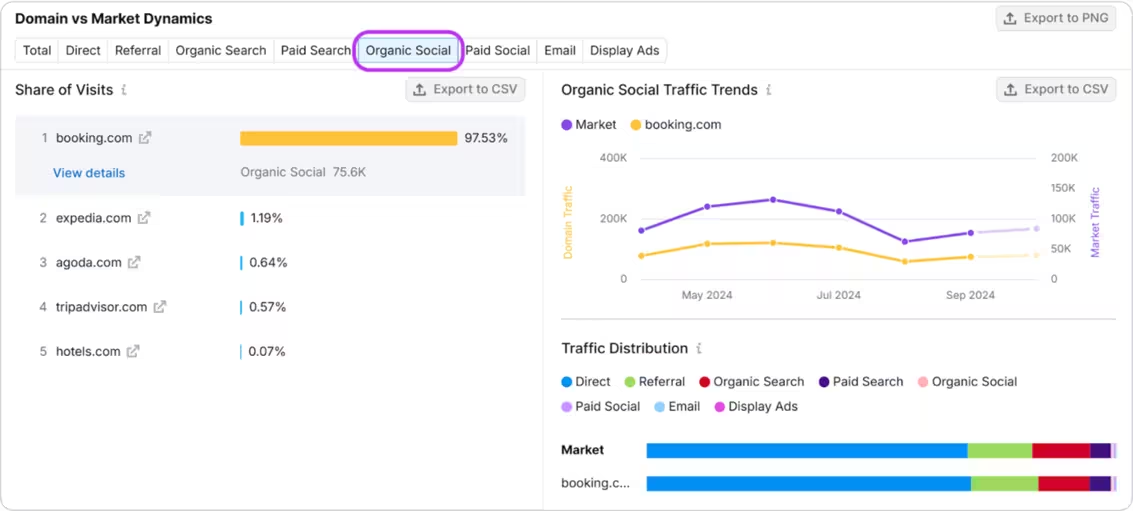
Pro Tip: Just because market traffic in a particular channel is declining doesn’t necessarily mean the channel is a bad bet. It could mean there’s an opportunity to invest where other players aren’t. You may want to experiment with the channel to see what happens.
Go through each competitor in the Share of Visits section and see how they compare in the Organic Social Traffic Trends chart. Which competitor trend line is going up for organic social? Which competitor trend line is outperforming the market line? You’ll want to pay special attention to these competitors – they’re doing something right.
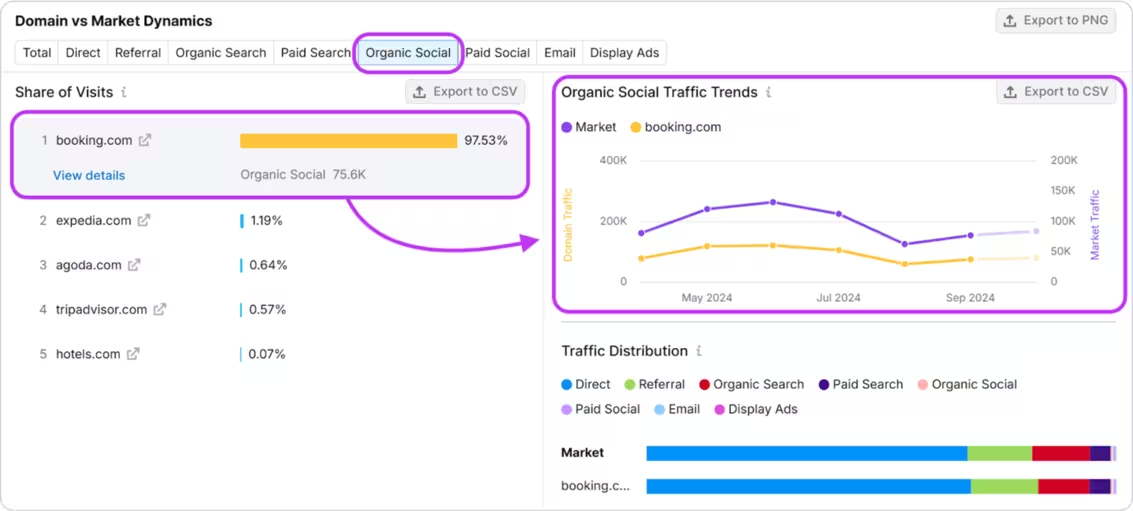
Now, let’s visit Traffic Analytics. Select the country you’re interested in exploring and its geolocation-based web traffic analysis will provide important information about your competitors’ website performance in your new market.
Examine the Overview for traffic trends, purchase conversions, and engagement metrics.
Are the top players seeing growth for your business’s most important metrics? If so, this is another sign that this market holds great potential for your business.
If the competition isn’t trending upwards for your key metrics, select another region to see if these top players perform better there. Consider adding this new region to your shortlist.

Select the Top Pages tab to see the traction of your competitors' web content in your target market.
View the “1Y Trend” column to see if the demand for these pages is increasing. If so, that’s a great nudge to consider creating content that addresses similar themes to those pages.
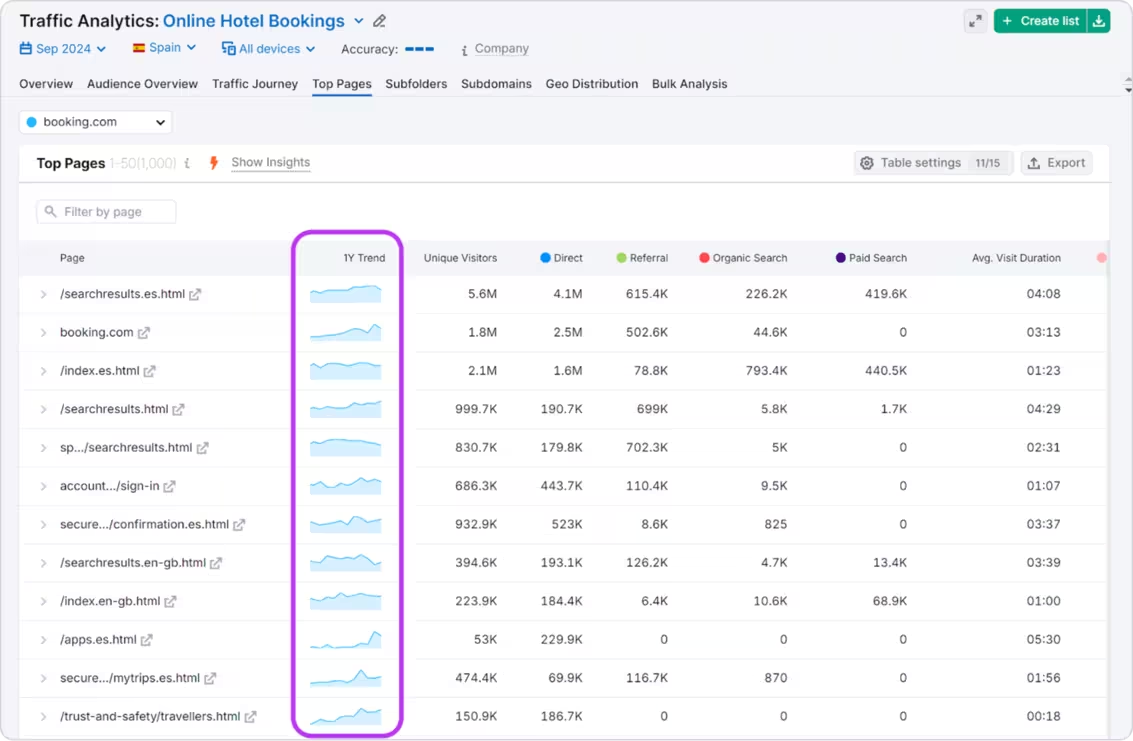
Filter by channel to see which products or content types perform well in this market.
For example, filtering by organic search in the online hotel booking market in Spain, we can the most searched for destinations.
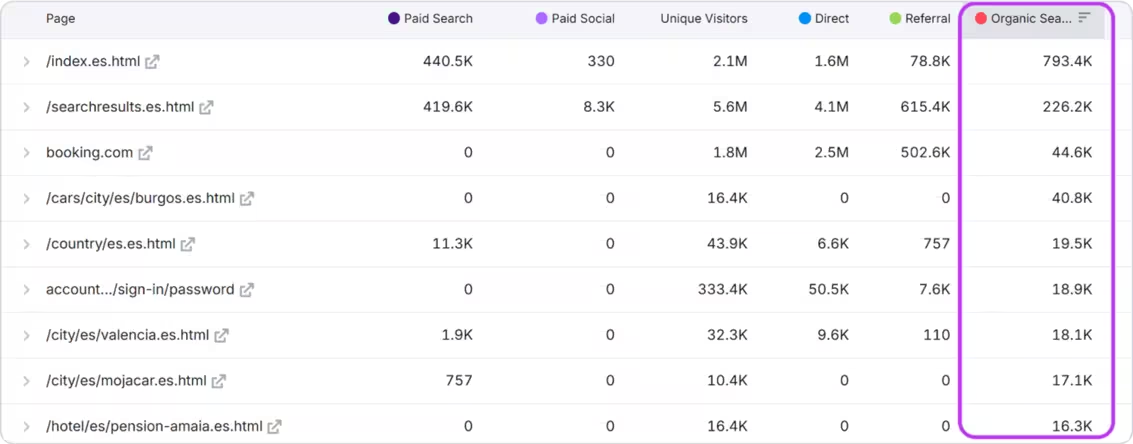
If you plan to expand into the Spanish tourism industry, you might create content or promos focused on these vacation spots.
Next, head to the Geo Distribution report to discover traffic trends for different countries. Looks like Spain is on a gradual upward trend according to this chart.
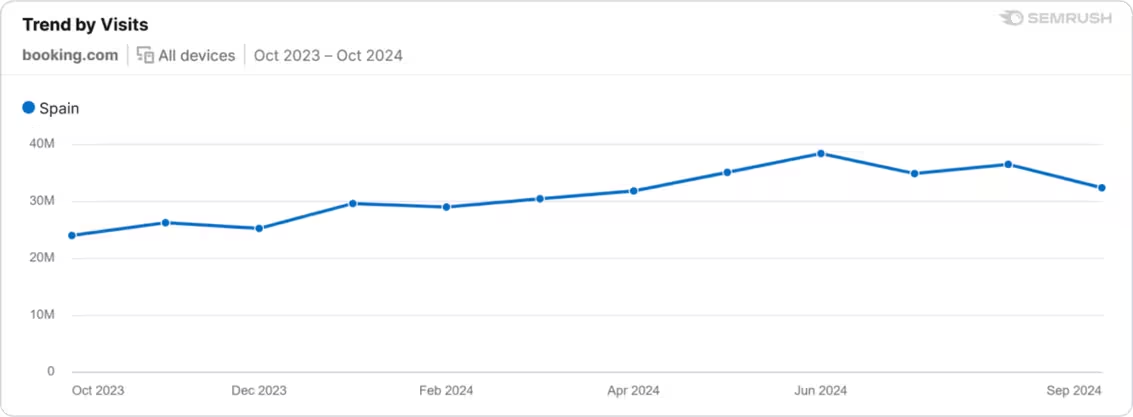
Go to One2Target on the navigation bar to explore the demographics and behavior of your competitors’ audiences in your new potential market.
This data helps you pinpoint the audiences with the highest potential for your business.
Let’s look at this chart to learn about the key segments of your competitors’ audiences in these locations.
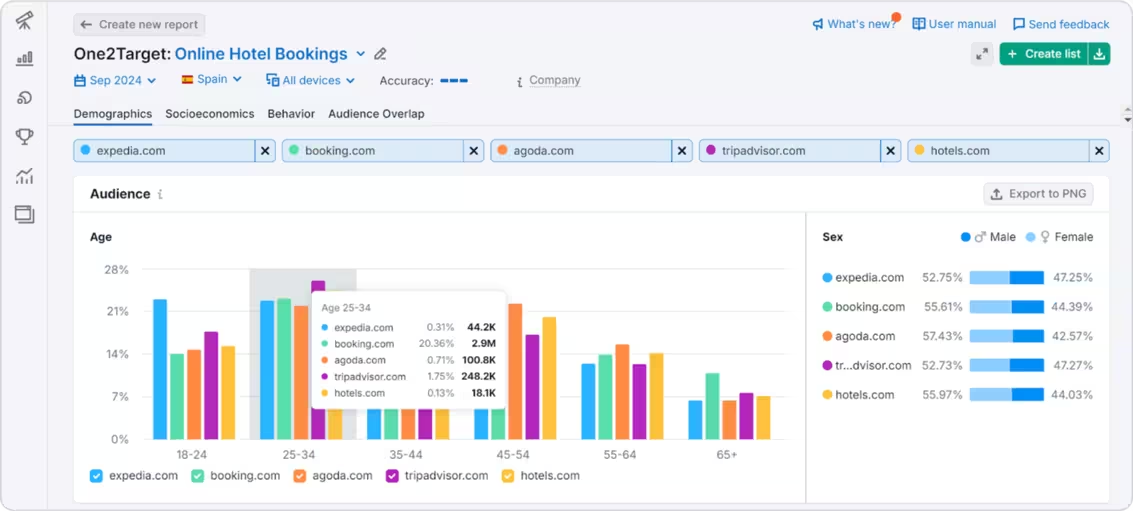
The top 5 online hotel booking websites do best with the 25-34 year-old crowd. This is where you’ll face the most competition, but also discover the largest segment. However, you’ll have fewer competitors in your way with customers aged 55+.
Pro Tip: To target a less competitive market segment, study the leader's marketing strategy. For example, agoda.com excels with the 45-54 age group—reviewing their campaigns can reveal how they engage this audience.
EyeOn is your hub for keeping tabs on competitors’ content in your new market.
Set up competitive tracking for your target location to monitor new landing pages, blog articles, search ads, and social activity.
Reviewing the Timeline content will uncover intel on audience targeting and its positioning in this market.
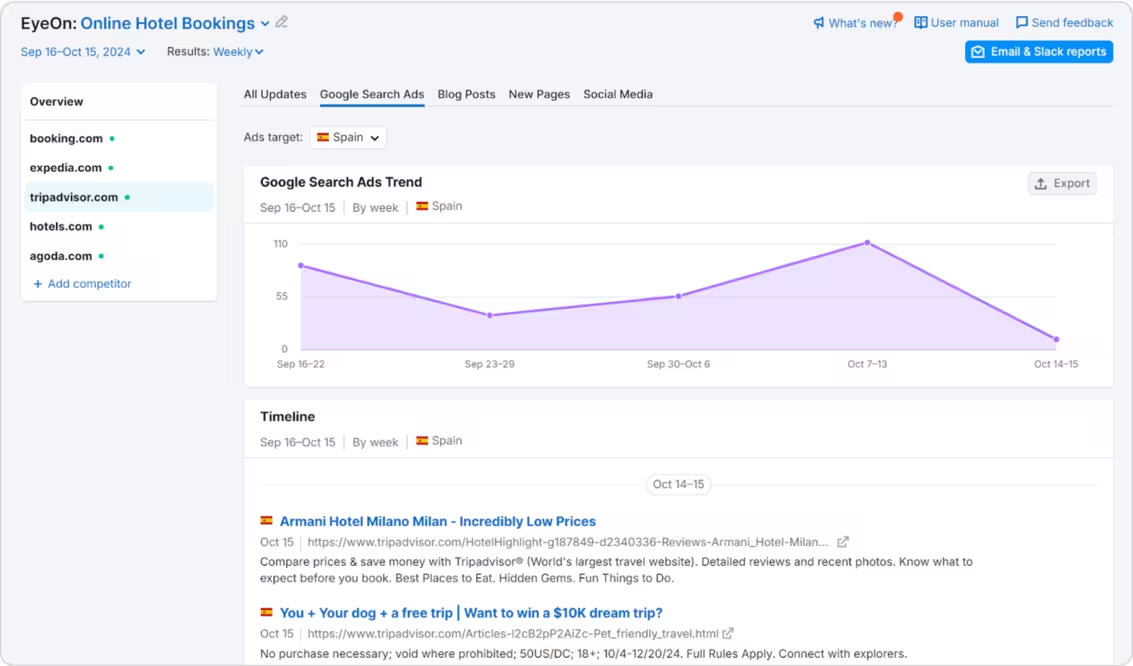
Be sure to sign up for email or Slack alerts for weekly updates on competitors’ marketing moves in this locale.
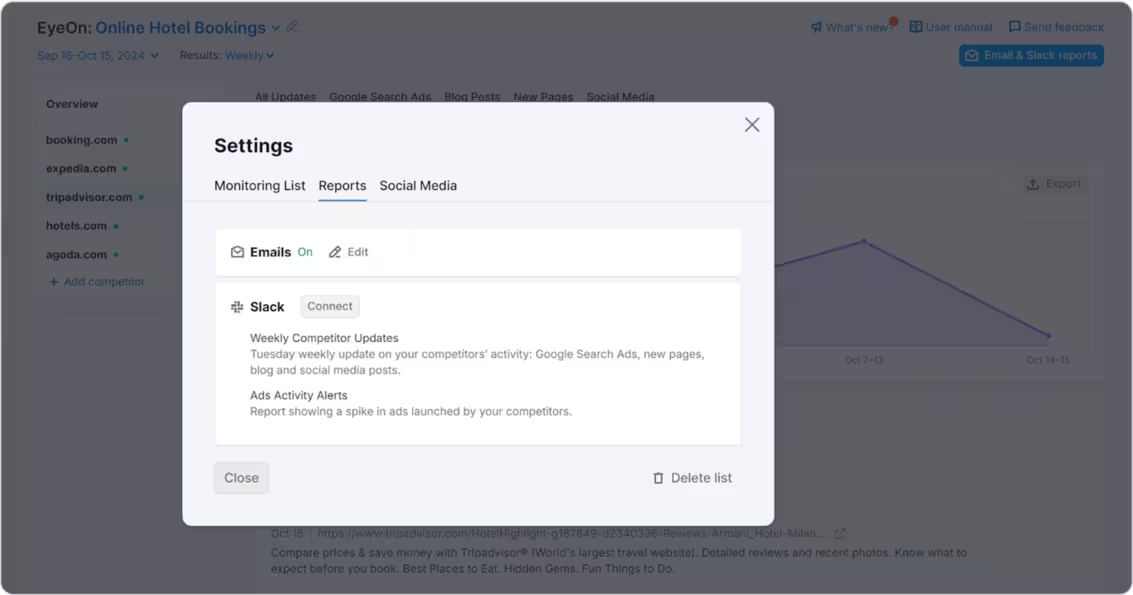
In less than 30 minutes, .Trends will give you a holistic view of whether a new market will bring growth to your organization.
Expand into new markets with a data-driven approach by following these steps:
These steps equip you with actionable insights to strategically expand, engage new audiences, and drive sustained growth in new markets.